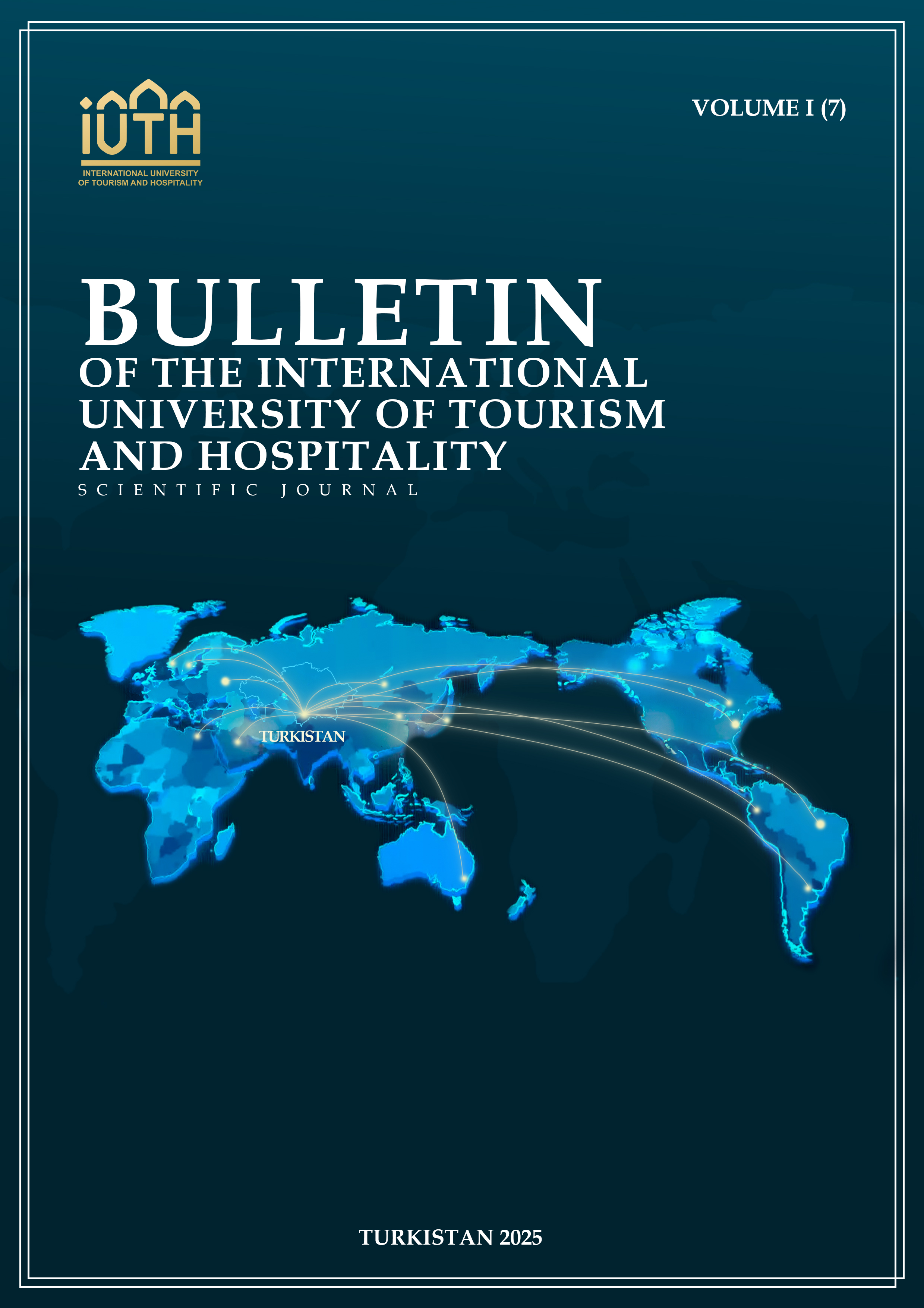PRESENTATION OF STRATEGIC PLAN DIRECTIONS IN THE FORMATION OF SUSTAINABLE TOURISM ON THE EXAMPLE OF LARGE CITIES OF KAZAKHSTAN
Keywords:
smart city, tourist and recreational spaces, gastronomic tourism, event tourism, sports tourism, creative tourismAbstract
This study focuses on the integration of sustainable development principles into urban tourism management. The aim of the research is to identify and analyze the socio-economic, geographical, and environmental factors influencing urban tourism development and to propose strategic planning approaches that enhance sustainability in rapidly growing megacities. The study employs a mixed methodology combining qualitative and quantitative methods. A comprehensive review of existing literature on urban tourism and sustainable development was conducted, alongside an expert survey among key stakeholders in Kazakhstan’s tourism industry. The survey results were analyzed using statistical methods, including Kendall’s coefficient of concordance, which allowed for assessing the consistency of expert opinions. The findings indicate that optimizing sustainable urban tourism in Kazakhstan's major cities requires tailoring tourism development strategies to the unique characteristics of each city. The analysis emphasized the importance of strategic planning to facilitate targeted infrastructure development and balance tourism growth with ecological sustainability. By aligning the tourism development process with the principles of sustainable urban planning, cities like Astana and Almaty can enhance their attractiveness as tourist destinations while achieving ecological sustainability and economic resilience. This research contributes new insights into the integration of sustainable development principles into urban tourism management in the context of developing countries. The analysis, focusing on the unique socio-economic and environmental factors of Astana and Almaty, provides valuable strategies for policymakers and urban planners aiming to promote sustainable tourism in similar urban contexts.


